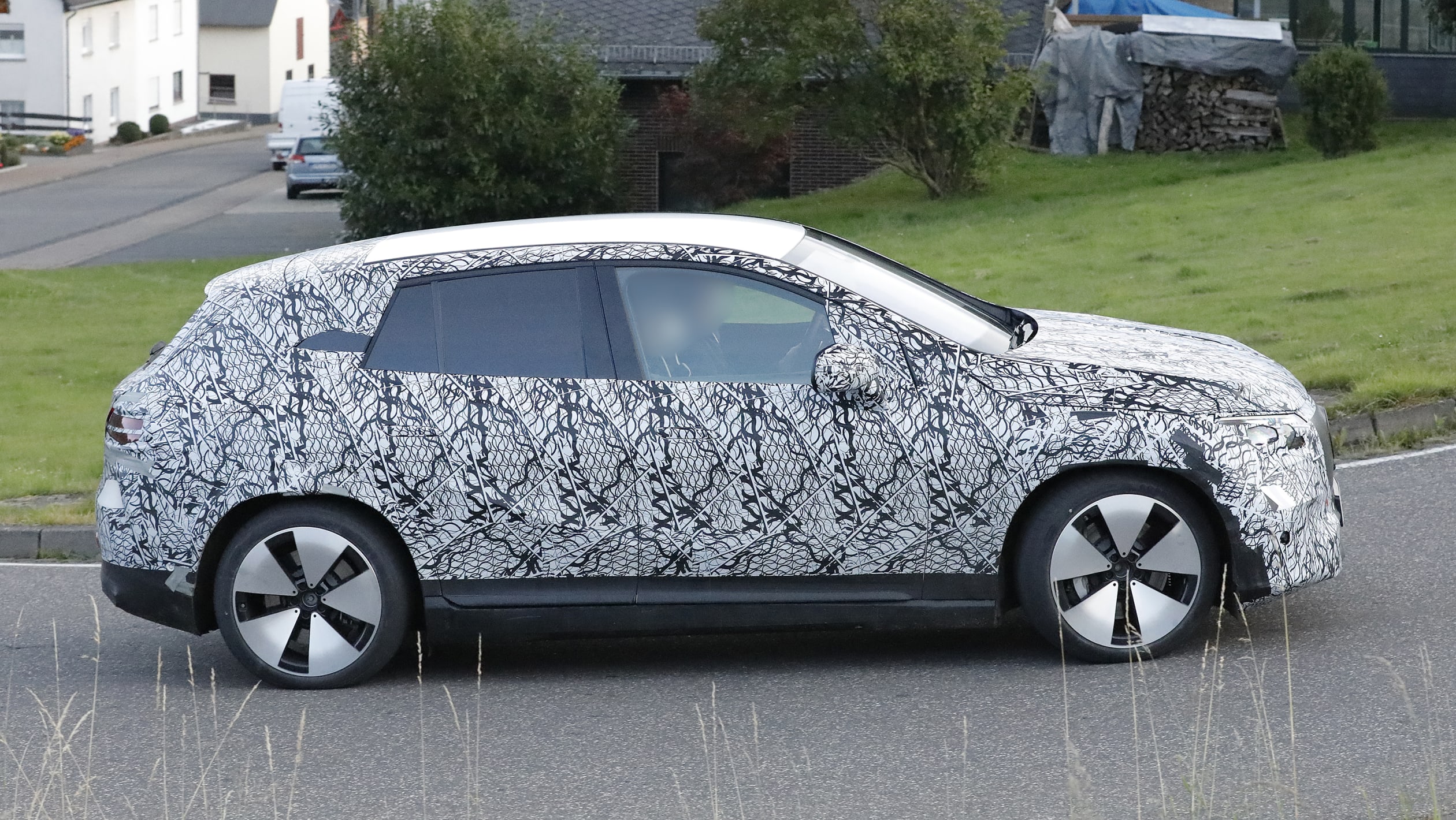The new EQE SUV will take design inspiration from other Mercedes EQ models.
Mercedes is progressing with the development of its latest all-electric car – the EQE SUV. We’ve seen it testing in prototype form and are expecting a full reveal to be near, with the EQE SUV going on sale in 2023.
The EQE SUV will be Mercedes’ fifth all-electric high-rider, sitting between the EQC and newly unveiled EQS SUV. It will draw comparisons to those two cars as well as the EQE and EQS sedans in terms of styling, technology and powertrains.
The German firm has been out testing the new EQE SUV earlier this year and from what we can make out under the camouflage, it’ll pretty much mirror our rendering. Features such as the smooth front facia and slim LED headlamps are common design traits seen on the brand’s other EQ-badged vehicles.
The grille will house radars and sensors for the EQE SUV’s driver assistance technologies. Cooling will be provided by a shallow vent below the main grille, which we anticipate will have some form of active vane that can shutter the opening for better aerodynamics.
Like our previously spied prototypes, these winter test cars feature a set of low-drag alloy wheels, which should help to eke a few more kays out of the EV’s battery pack. The steeply raked windscreen and ultra-smooth surfacing should also benefit range, too. Our exclusive images show how the finished car will look once the wraps are pulled off.
Inside, we’re expecting plenty of similarities with the forthcoming EQE sedan. So, buyers should also be offered Mercedes’s MBUX Hypercreen infotainment system, which debuted on the EQS. The system comprises a 12.3-inch digital instrument panel, a 17.7-inch central display and an extra 12.3-inch touchscreen for the passenger.
Rather than the MFA2 platform the EQA and EQB use, the EQE SUV will sit on EVA2 architecture which is an EV-bespoke platform used for the electric-only EQE and EQS saloon. The EVA2 platform is highly modular, and Mercedes is expected to launch a broad range of powertrains and battery options across the EQE range. In fact, the German brand has already filed trademarks for a whole host of badges, including AMG monikers from EQE 43 to EQE 63, suggesting that high-performance variants are in the works.
Mercedes has already revealed powertrain details for the car’s saloon relative in EQE 350 guise. This will use a 90kWh (usable) battery to power a motor on the rear axle, which produces 215kW and 530Nm of torque. Performance figures for the EQE 350 haven’t yet been released, but Mercedes quotes a range of up to 660km from a full charge.
Don’t expect an EQE 63 SUV to get the larger 120kWh battery from the EQS however, as Frank Wundrak, the vehicle-testing head at Mercedes has said it won’t fit within the EQE’s platform.
The EQE saloon also offers support for 170kW DC rapid charging, which can top the battery up to full capacity in just 32 minutes. When connected to a slower 11kW AC charger, the same charge takes eight hours and 25 minutes.
Mercedes also offers the saloon with an optional 22kW AC on-board charger, reducing this time to just over four hours – and the firm has partnered with providers such as Ionity and Shell Recharge to give its future EV drivers convenient access to rapid charging stations.
Speaking about the company’s future, Mercedes CEO Ola Kallenius, said: “At Mercedes, we are going from EV-first to EV-only for our new architectures and cars. On a global level, the pace of change in the markets will vary, of course. A little faster here, a little slower there.
“But the transformation to battery electric cars is unstoppable. And it will pick up speed everywhere. We are accelerating our ramp-up in R&D activities to serve an all-electric era. Investments in new technologies will be significantly increased and pulled forward. This includes expanded activities in battery cells and systems.”
Mercedes has already launched a range-topping EQS SUV this year, which will eventually spawn its own Maybach variant. The G-Class will go also all-electric in 2024 with a model called EQG confirmed, and in 2025, the firm will launch its next-generation MB.AE platform as it shifts towards becoming a pure-electric manufacturer.
Alastair Crooks







